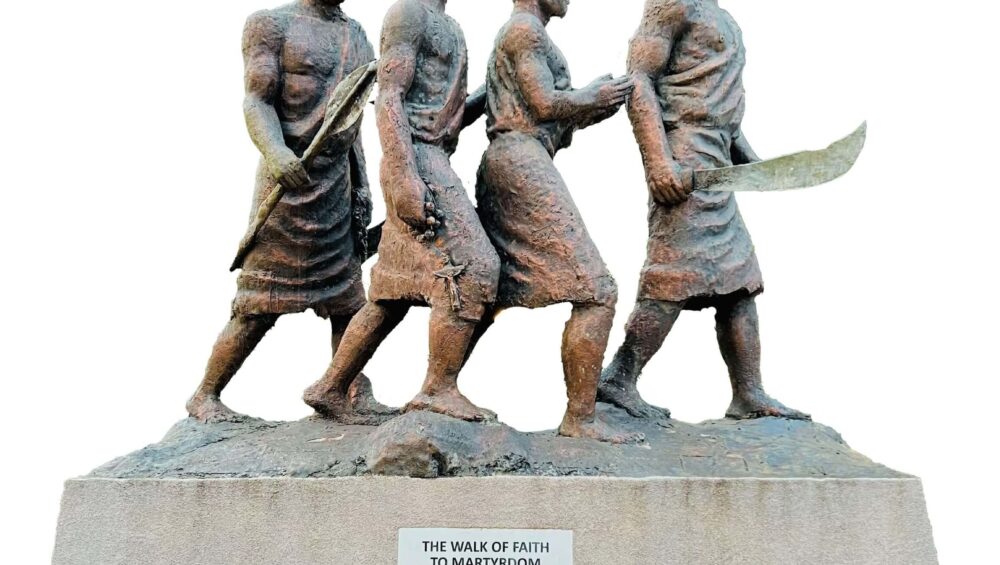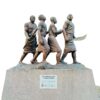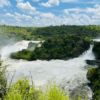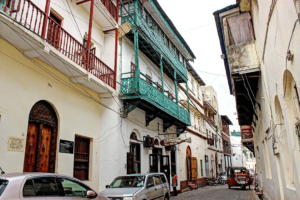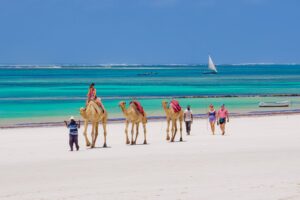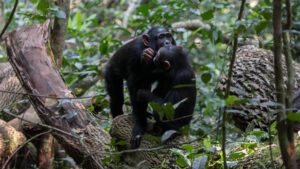3rd June holds international significance as Uganda Martyrs’ day a special day commemorating the execution of courageous young Christian and Muslim men between 1885 – 1887 in various locations, with Munyonyo Namugongo and Nakiyanja being the most prominent among them.
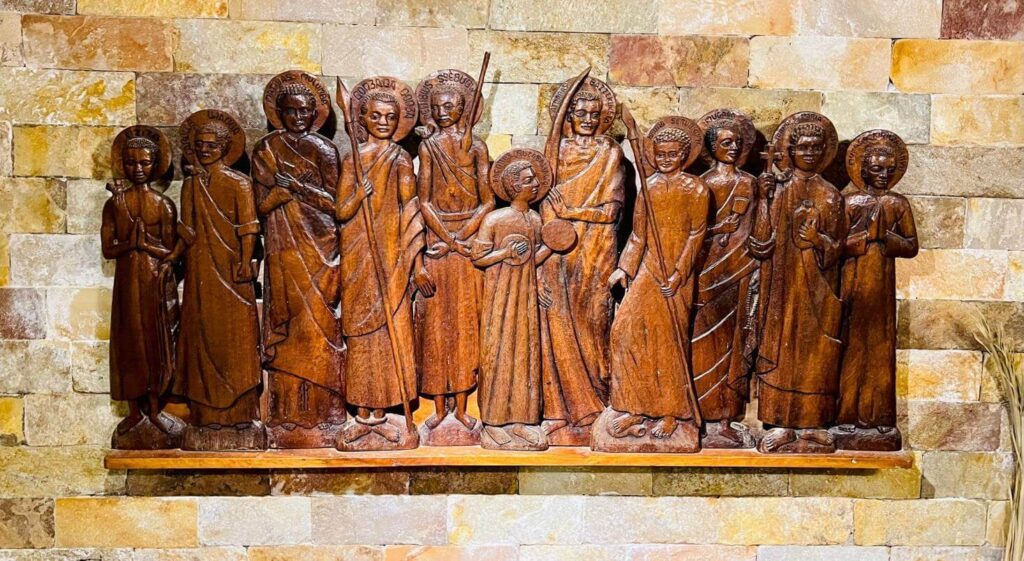
Before 3rd June, a sequence of events were happening that started way back on 15th November 1885 with the execution of Joseph Mukasa Balikudembe the leader of all Christians by then, who was beheaded and burnt, at the current day Nakivubo swamp in Kampala, for having pleaded with kabaka Mwanga, not to kill Bishop James Hannington, an Anglican missionary, who accessed Buganda via the Eastern route from Busoga, which was known as Buganda’s back door and whoever used it, was regarded as an enemy to the mighty kingdom.
The tree under which Kabaka Mwanga sat and made the execution command to kill the Uganda Martyrs.
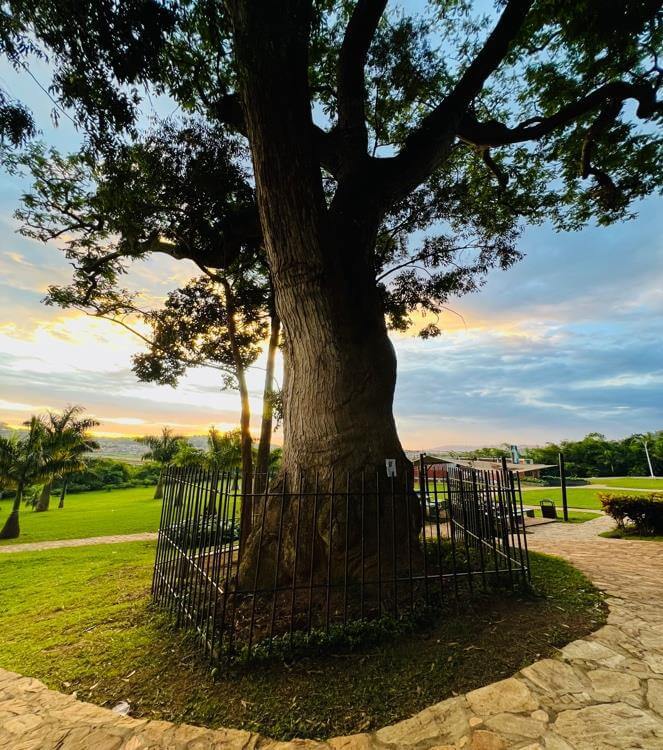
Preceding the king’s issuance of the execution command, the tragedy started at the current day Munyonyo martyrs’ shrine (Munyonyo Martyrs basilica) on Tuesday evening, 25th May, 1886 when the sovereign king of Buganda, Kabaka Danieri Mukasa Basammula Ekkere Mwanga II, lost the gun gifted to him by missionaries in Lake Victoria just close to his palace from their hunting expedition with his entourage. Upon his arrival at the palace, the irate king called his servants and many were not around, they had gone for catechism and prayers in their respective religions and upon their return, he called everyone and commanded religious believers to disassociate from his royal associates. 16 year old Denis Ssebugwawo boldly led his team, fearlessly taking the first move and the prowling Kabaka Mwanga II speared him on the spot, he ordered all believers to be arrested and sentenced them to death. He handed Ssebugwawo over to executioner Mpinga Kaloke that evening, who on Wednesday, 26th May 1886 handed him over to his men Mulyowa and Matembe for final execution. He was first beheaded and after hacked into pieces at Munyonyo which was the Kabaka’s palace by then.
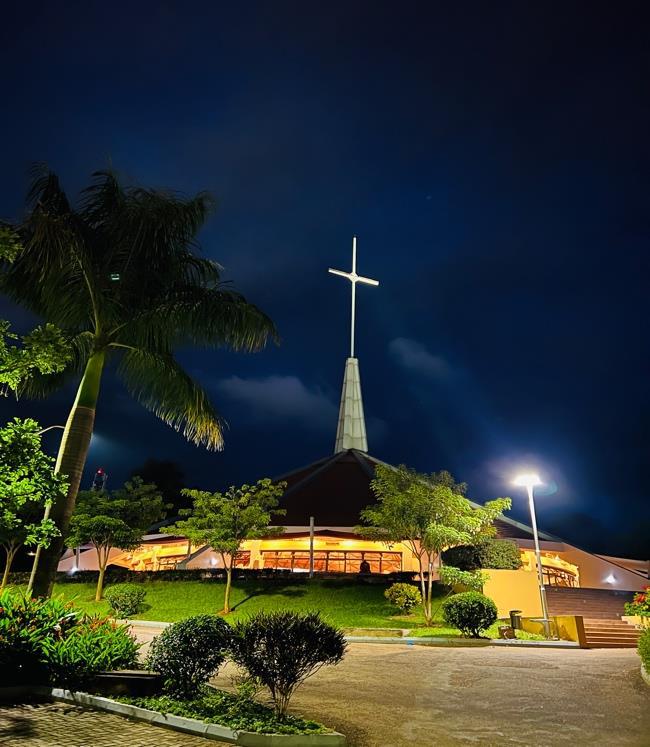
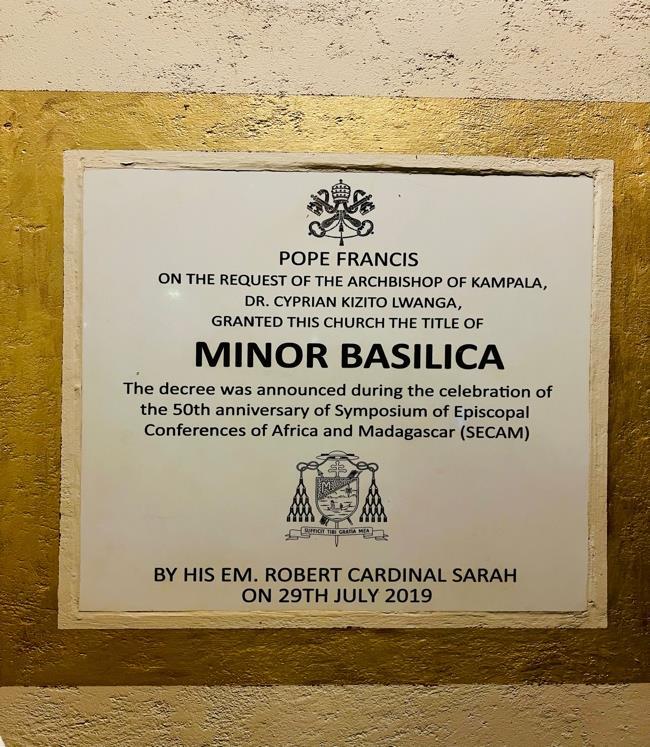
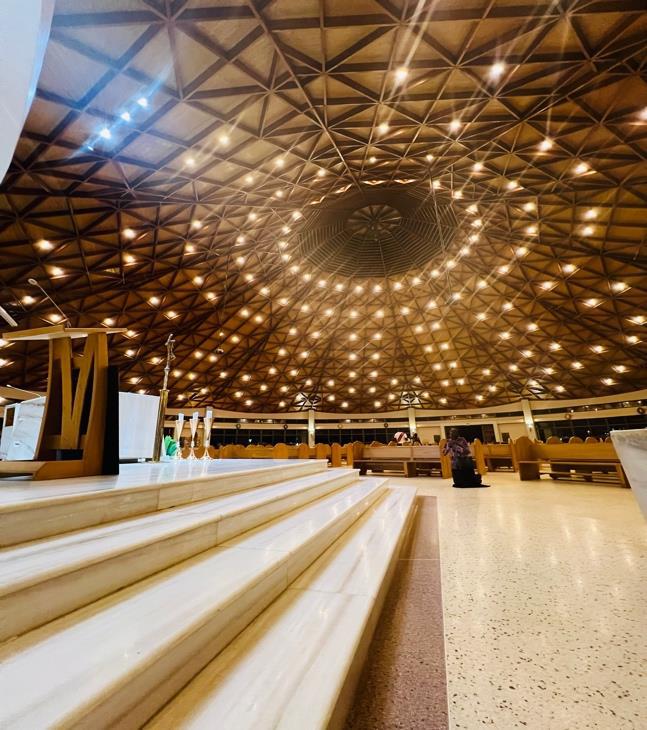
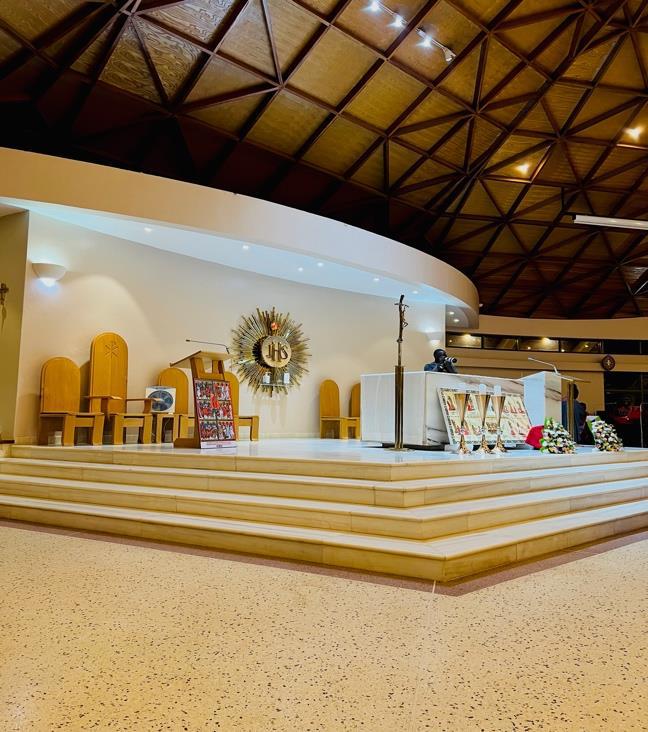
Munyonyo Martyrs Basilika
During the night they were condemned, Charles Lwanga who was the leader of all believers by then, secretly administered baptism to some of his fellows including kizito Omuto, Mbaga Gyaviira and Mugagga Lubowa that night.
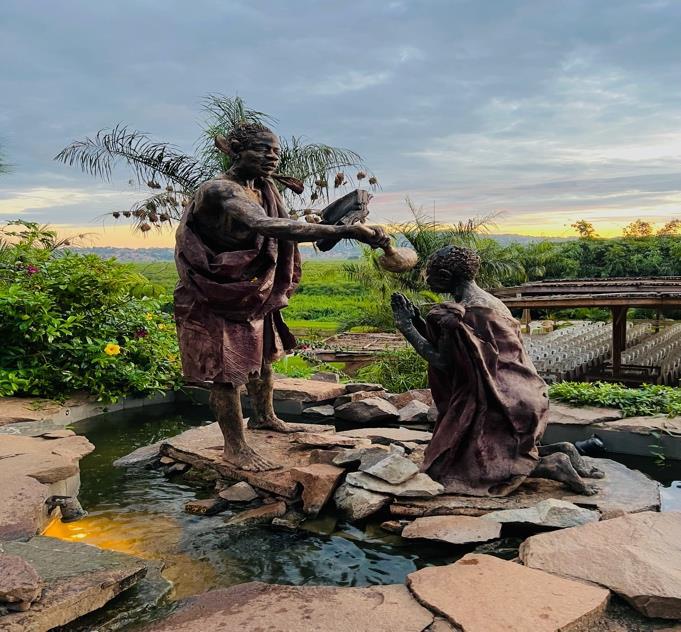
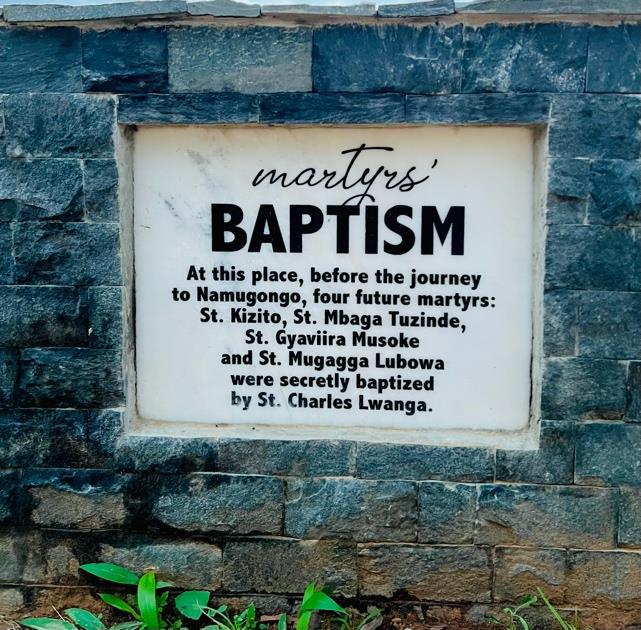
Monument showing some of the Martyrs Baptism the night before execution
On Wednesday morning, 26th May 1886, Andrew Kaggwa was apprehended at his residence and was amputated per the orders of the Katikkiro (prime minister) Mukasa, who had ordered to see his arm before he had breakfast as proof for his death. He was then beheaded, cut to pieces and died later in the afternoon of that day.
The monument of St. Andrew Kaggwa who was martyred on 26th May, 1886 showing his right amputated arm.
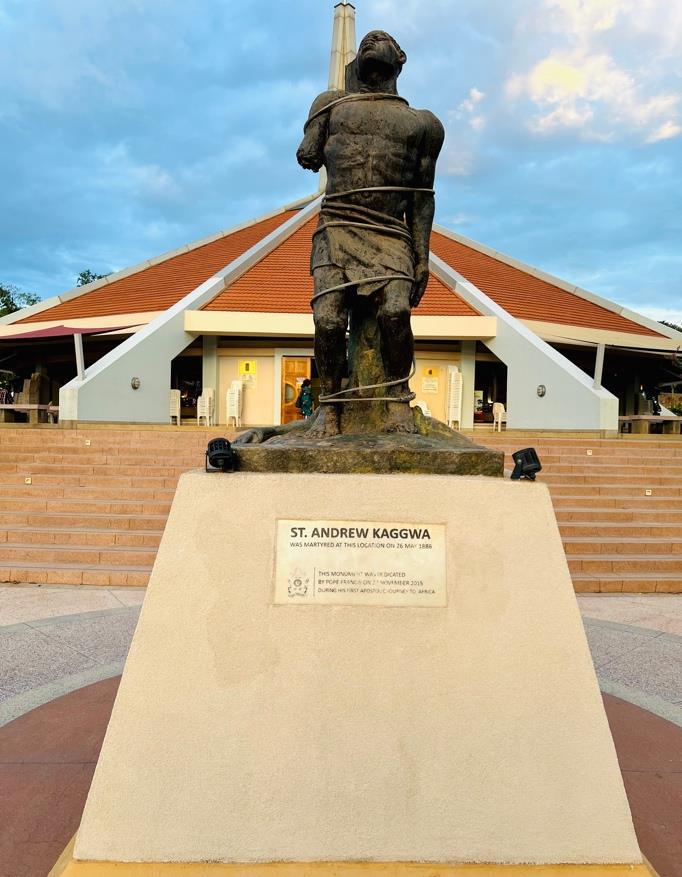
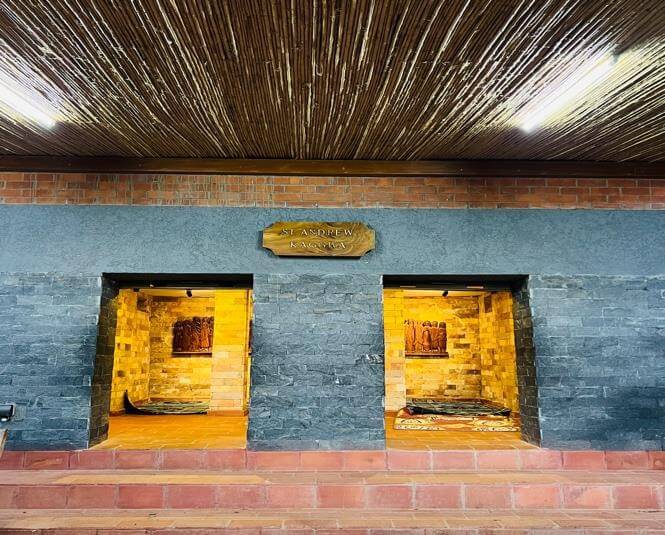
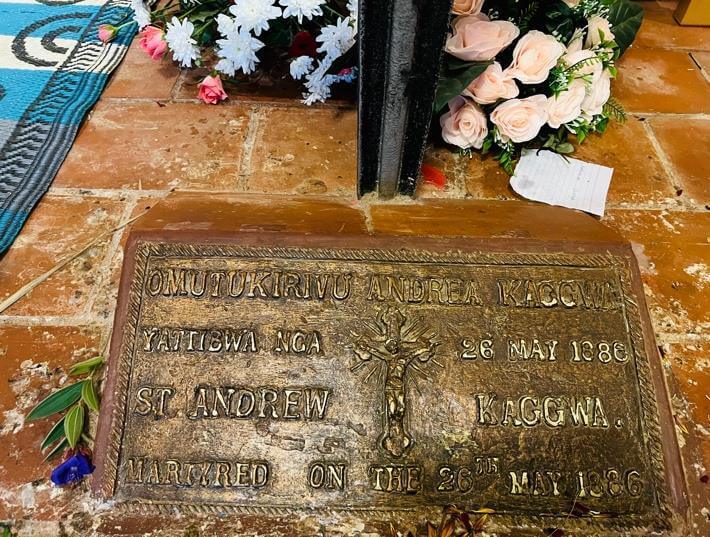
The tomb where St Andrew Kaggwa shed blood after amputation before his death.
After this event, the convicted embarked on their voyage to Namugongo. It was a two-day pilgrimage, and various people, were killed on the way, for example Pontian Ngondwe, who was killed at Takajjunge- Munyonyo formally known as Tabataba. He was speared to death by the chief executioner Mukaajjanga in the evening of Wednesday, 26th may 1886, beheaded by Sittankya, (an executioner) and his corpse cut into various pieces and littered all over the place. The rest proceeded with their journey to Namugongo.
On the morning of May, 27th 1886, upon their arrival at the current day “Nakivubo” swamp, 20 years old Athanasius Bazzekuketta Kizza, volunteered to be killed at the same place where their Christian leader Joseph Mukasa Balikudembe was killed, as asked by the chief executioner Mukaajjanga. This was granted to him and was speared to death. With slave yokes and shackles they were tied, and moved in a coffle as they proceeded with their pilgrimage to Namugongo.
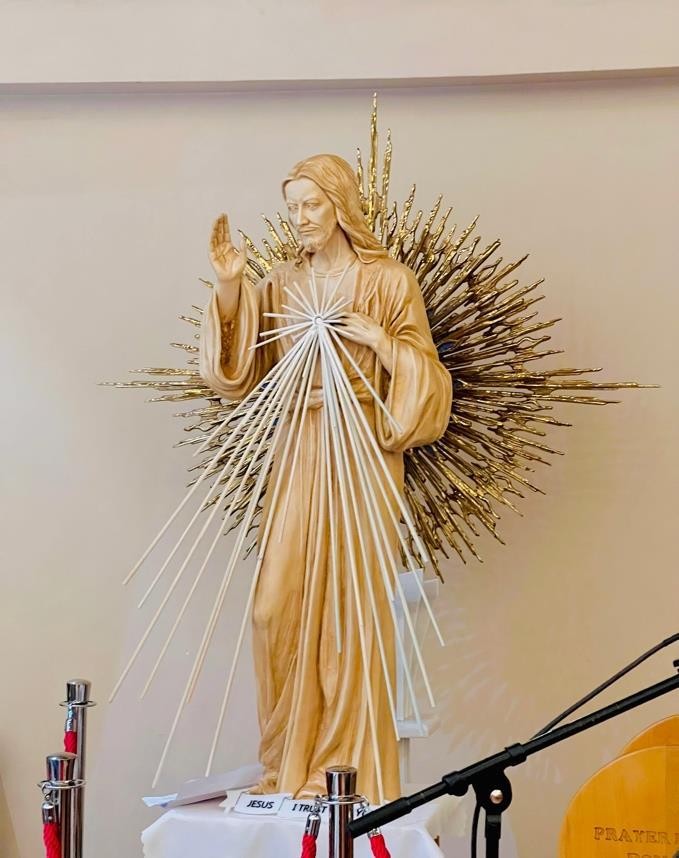
On the same day, when they reached a place currently known as “Old Kampala”, Mathias Kalemba Mulumba also asked not to be taken a long way to Namugongo, as if death could not be met there. After saying farewell to his friend Luke Banabakintu, the executioners got frustrated and took Mulumba into a grassy jungle a little away from his fellows and cut off his legs, both his arms, and then cut some pieces of flesh off his back and roasted them before him. So as to stay longer in pain, the executioners skillfully applied herbs on his wounds and left him alone into the bush to be devoured by vouchers. He suffered silently while calling upon his creator until 30th may 1886 when he breathed his last.
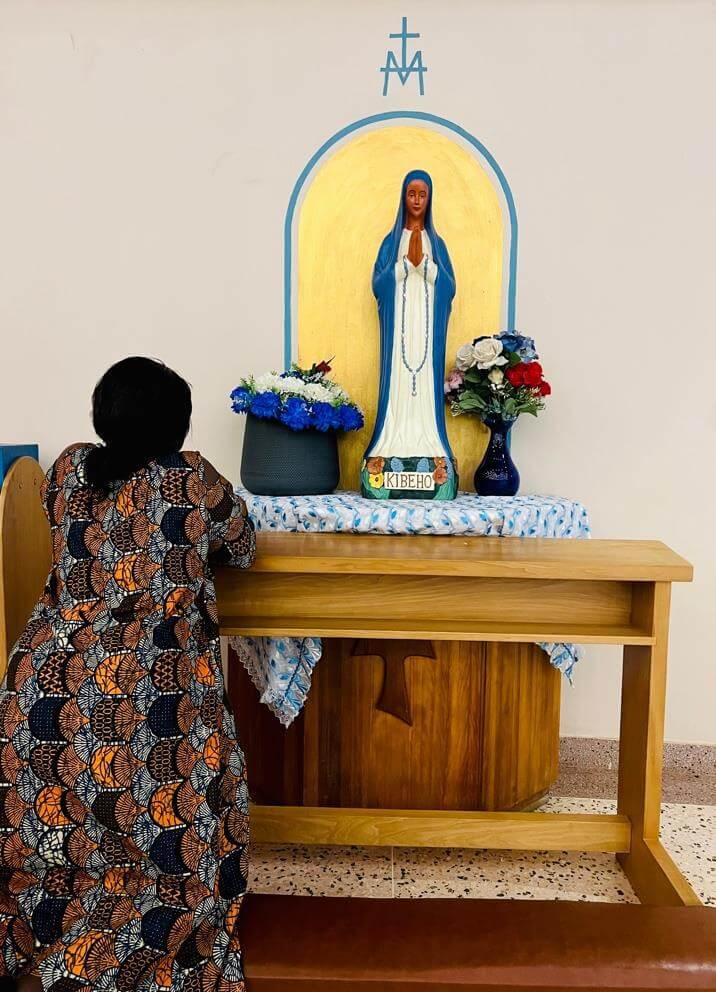
10 miles away from where Mathias Kalemba Mulumba was executed, at a place known as Lubaawo, Gonzaga Gonza was killed. He was so tired and worn out from the long trek, with his feet so swollen and shackles biting into his flesh, he collapsed and was speared to death at around noon of 27th May 1886.
When they reached the kingdom’s execution grounds at Nakiyanja (the exact location of the Anglican martyr’s shrine), the condemned were not executed instantly. They were kept hostage for a week, as executioners were preparing to end their lives. They were gathering sufficient fire wood and reeds that would help them throughout the execution.
On 3rd June, 1886, Charles Lwanga became the next victim when one of the executioners “Ssenkoole” chose him to be their sacrifice to the gods before the rest were executed, as a ritual was in Buganda to prevent the ghosts of the executed from haunting their executioners. 50 yards away from where his fellows were, he was taken at the place known as Namugongo (this is where the catholic Martyr’s Basilica was built), was made to prepare his own death, wrapped into reeds and burnt alive. He did not make any loud cry but moaned as he mocked his executioners asking them to change him like roasted meat so that all parts of him may be roasted till, they are fully ready as though they were to devour him as a roast. He twisted as he prayed to death.
After, the rest were also wrapped in reeds and put on a heap of firewood, and were burnt alive, as they moaned and sung songs of praise and worship so ready to meet their creator. And this is how these courageous young men became “MARTYRS”
As per the orders of the Kabaka, anyone charged of treason did not deserve a decent burial, and who ever attempted to bury them was also considered to be a traitor. So, the executioners remained at the scene to ensure no one was given a decent burial and added fire wood to fuel the blaze and make sure all remains burned to ashes but all in vain. They decided to vacate the place after trying their best. This was a mystery they had never seen before and as a result, many of the executioners resigned their execution jobs for good.
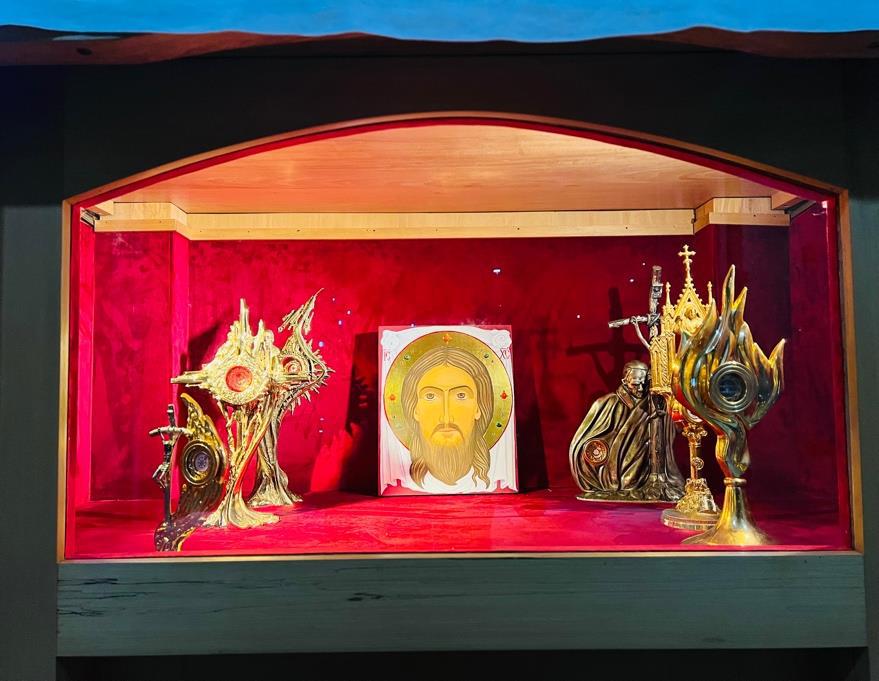
John Mary Kiwanuka Muzeyi, was the last one to be executed, he was martyred on Thursday 27th February 1887 in Katikiro’s (prime minister) premises for inquiring whether the king was sincere with the decision he made. He was beheaded and slain, and his body was wrapped into wild banana leaves, and thrown into Kisenyi swamp. He marked the end of the execution of believers in Buganda under the order of Kabaka Mwanga II.
It should be remarked that among the people condemned and mattered, 23 of them were protestants who included Makko Kakumba, Dawudi Muwanga, Yusuf Lugalama, Musa Mukasa and others, 22 were Catholics, and among them were Andrew Kaggwa, Kizito omuto, Athanasios Bazekuketta, Charles Lwanga, and very few were Muslims. Not forgetting some other 2 Catholics named Daudi Okello and Jildo Irwa who were martyred at Paimol in Gulu making it a total number of 24 Catholics martyred. It is also said that there are some other 6 prisoners who were on death row and were killed together with the martyrs in Nakiyanja.
6 months later, remains of Charles Lwanga were taken by some Christians named Leo Lwanga, Matayo Kirevu, and Bwaliri Kamya, and took them for a decent burial. But after a series of events, these remains together with those of other martyrs, were taken to Rome in St Peter’s Basilica for canonization by pope Paul VI in 1964 and this is how the young courageous men became “SAINTS”. 2024 marks 60 years since the canonization of the Uganda Martyrs with celebrations happening all over catholic parishes.
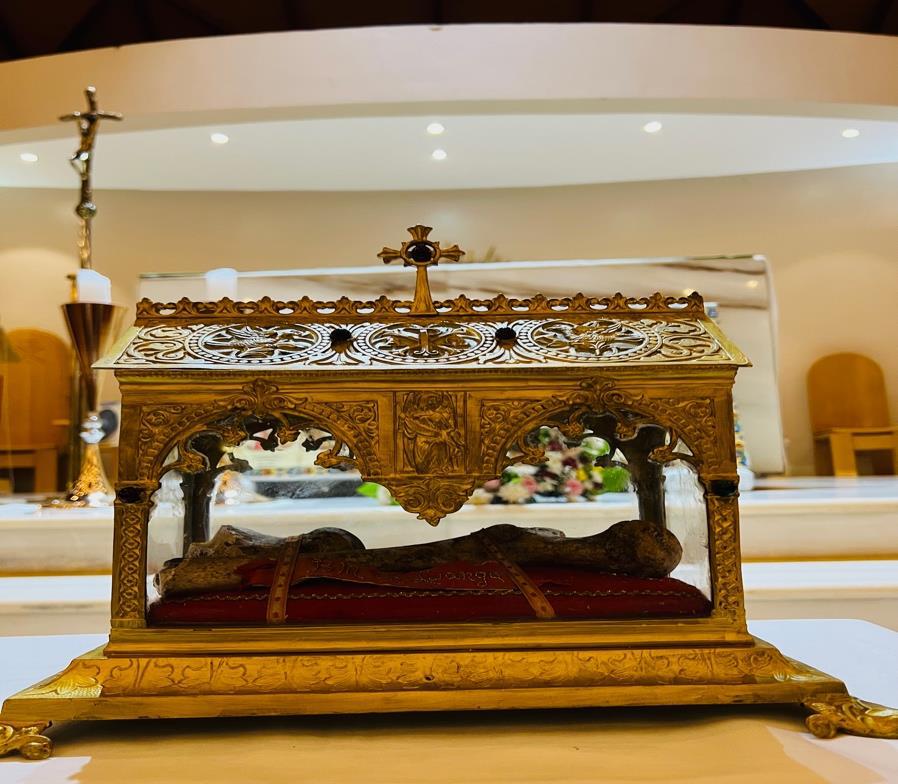
After being canonized, the Uganda Martyrs left an indelible mark on history of Uganda, Africa, and the whole world on July 31st 1969, as they prompted the first-ever reigning pope to visit Africa, and particularly Uganda. Pope Paul VI visited Uganda after an invitation from Uganda’s first Metropolitan Archbishop Emmanuel Kiwanuka Nsubuga during the 1967 Synode of Bishops in Rome, to come and visit the Martyrdom site and also consecrate the newly built alter for the 22 Catholic Uganda Martyrs, and on that day, a golden page was written and shall internally be remembered and cherished.
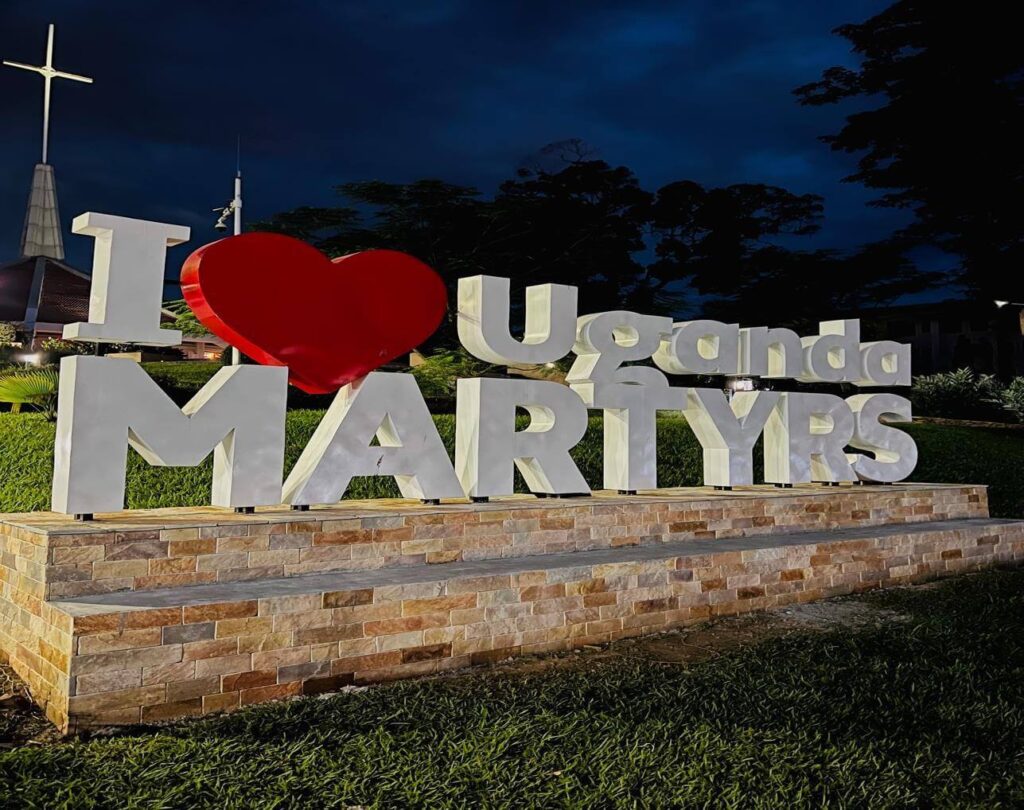
© 2024 TwentyEight Tours and Travel Ltd. All rights reserved, including the right to reproduce this work thereof in any form whatsoever. For information, address the publisher

